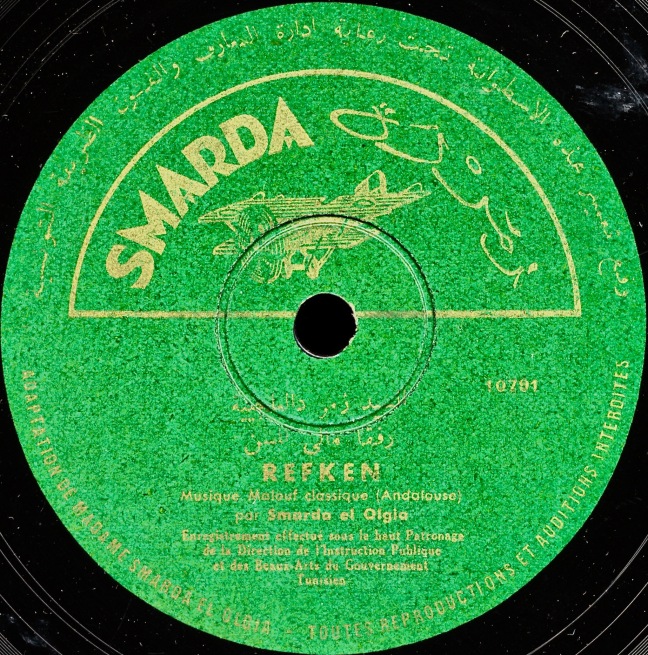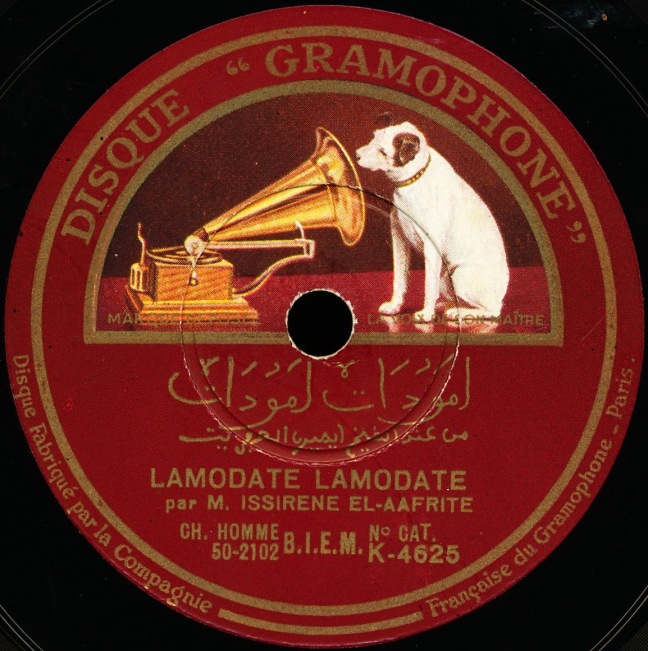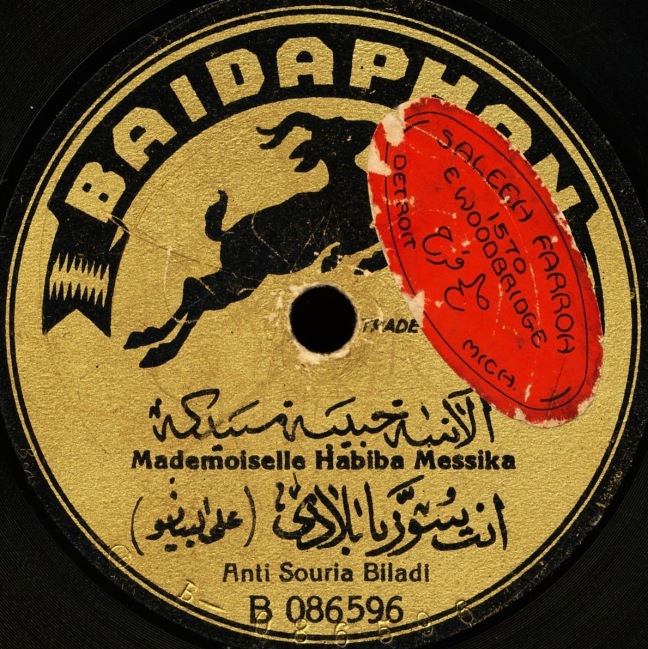The Tunisian Jewish vocalist Fritna Darmon was a force. She was also a pioneer. Born sometime toward the end of the nineteenth century, she was among the first cohort of artists to record in Tunisia. She and her music were integral, for example, to Gramophone’s 1907 sessions, one of the label’s first such recording expeditions in the region. Over the next few decades, in addition to appearing regularly in concert, she would release dozens of records for Gramophone, Pathé, Odeon, Anker-record, Orient Record, and the Tunisia-based Bembarophone. Darmon’s voice carried well beyond the bounds of Tunisia as well. On March 12, 1930, for example, international music critic Irving Schwerke happened upon one of her records at the shop of the Padova brothers in Paris. Writing in the European edition of the Chicago Daily Tribute, he remarked of one of her Odeon releases that it, “consists of ditties from the land of Tunis, interpreted and sung in Arabian, and in conformity with the best vocal traditions of the country.”[1] The following year, her records could likewise be heard at the Tunisian pavilion of the Colonial Exposition of 1931 at Vincennes.
Her staggering output was split three ways between Egyptian song, ma’luf and especially the related ʿarubi genre, and an emerging repertoire of popular song which began to hold sway during the interwar period. Indeed, Jewish female artists like Darmon served as the driving force behind what became known as ughniyya, which while dismissed by contemporary and later critics as “decadent,” served as an important vehicle to challenge a wide variety of social norms, including gender roles and the place of women.[2]
“Ouh alia el hachmia” (اوه علي الحشمية) recorded by Fritna Darmon for Columbia c. 1930, was very much part and parcel of the ever-expanding and ever-popular ughniyya tradition. The song concerns a very modern relationship about a young man and woman who have suddenly laid eyes on each other: “From the moment I saw him (ritu),” Darmon sings around minute 2.10, “he loved me and I loved him (habitu).”[3] Immediately afterward, she proclaims, “He asked for a kiss and I gave him a hundred.” But, of course, her parents find out. And the lover turns out to have been less than sincere. She promises that such a transgression will not happen again and that she will never leave her room, but the listener assumes otherwise. If “Ouh alia el hachmia” is performed by Fritna Darmon with a wink and a smile, the two brief but stirring instrumental solos at beginning and end are rather serious. Just before she sings “Ya layl” (O night), for example, we are introduced to an improvisation by Khailou Esseghir on the violin and one by Messaoud Habib on the harmonium. Both were considered among the greatest instrumentalists of their generation.
By my estimate, this is only the third Fritna Darmon record––out of the dozens released by her over her lifetime––to be made available again to the public. The route it traced to arrive at my doorstep and now on Gharamophone was a circuitous one. Its improbable preservation, carried, as it was, across seas and oceans in hurried circumstances, speaks to the importance such sound objects held for so many and for so long. We are fortunate to listen to it again thanks to Marco Soria of Milan. His mother Suzette (Perez) Soria, first purchased this record, alongside those of Um Kulthum, Mohammed Abdel Wahab, and their French counterparts, from her native Tunis before transporting her collection to Italy. Some two years ago, I was fortunate enough to have had Mr. Soria contact me and well, the rest is history.
As for the final chapters of Fritna Darmon’s life, that story is being pieced together at present. Thanks to an initial conversation with her great grandson Jesse Emsalem, we now know that while she settled in Paris at mid-twentieth century, she also spent some years living in Sydney, Australia.
Notes
Label: Columbia
Title: “Ouh alia el hachmia” (اوه علي الحشمية) [Sides 1-2]
Artist: Fritna Darmon
Issue Number: GF 427, W.L.T. 55; V 45.572 B
Matrix Number: 57418; 5254 BK
Date of Pressing: c. 1930
[1] Irving Schwerke, “Notes of the Music World,” Chicago Daily Tribute (European edition), March 12, 1930, p. 4.
[2] For more on Tunisian Jewish women and ughniyya, see Christopher Silver, Recording History: Jews, Muslims, and Music across Twentieth-Century North Africa (Stanford University Press, 2022), Chap. 2; and Ruth F. Davis, “Jews, Women and the Power to be Heard: Charting the Early Tunisian Ughniyya to the Present Day,” in Music and the Play of Power in the Middle East, North Africa and Central Asia, ed. Laudan Nooshin (Farnham, Surrey, England: Ashgate Publishing Limited, 2009), 187-206.
[3] This translation is indebted to the careful listening of Leila Ben-Gacem and the extended Ben-Gacem family.












